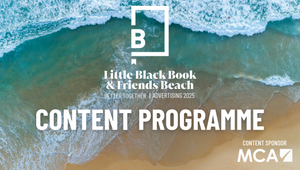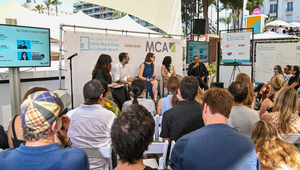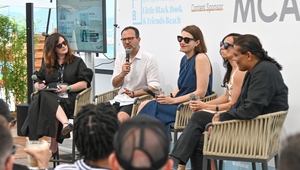
Creative Problem-Solving with R/GA’s Brice Birdsall

Being a producer is pure joy for
Brice Birdsall who has a talent for turning small budgets with big asks into
reality. That’s why she says it is important to look at problems in many
different ways and be creative when looking for the best solutions. In her free
time, Brice helps physically create spaces for
individuals to be able to connect with artworks and artists.
We chatted with Brice about what it
means to be an experiential producer and making asks tangible through creative
problem solving.
Q> Tell me about your career. What was
your path to where you are today?
Brice> Originally from Portland, Oregon I grew
up with parents who always encouraged me to pursue art over anything else. I
always knew I wanted to go into a creative field; my original plan was to
become a creative director, but my experience changed that. When I moved to New
York after college, I found myself at a small creative agency and was taken
under the wing of a brilliant production director, Yadira Quinones. While
working on set, I found that producers are the people who bring the creative
vision to life, and that really resonated with me. I jumped in headfirst and
never looked back. I went from producing the Kith Brooklyn storefronts to
large-scale events for Google. I didn’t know it at the time, but I’d found a
lifelong passion for production. Now, as an associate producer at R/GA, I’ve
had the opportunity to work on huge campaigns for
DuPont, Nike, and Planned Parenthood. My role, the creative environment, and
clients have given me the incredible opportunity to pair my experiential and
digital skills.
Q> What do you find exciting about
production?
Brice> For me production is pure joy - it’s
taking a creative concept and amplifying it. I began my career in experiential
production where we transformed physical spaces. For Kith’s retail space
project, I saw designs from the computer screen evolve into physical elements
that we then built in the store. Another amazing experiential production I
worked on was the activation for DuPont at TED 2019. We created a 360º CGI video that was projected onto the interior of a dome that we also
built. This blend of technology and digital design work in a physically
designed space is the production intersection that I love. My focus is
on creative problem-solving. Often I get handed creative work with a minimal
budget and large expectations, so it is my job to turn this into reality. In
these instances, creatives come to me with ideas larger than the budget ask or
timeline too short to physically produce an item. It’s up to me then to take
that ask and make it a tangible through creative problem solving - whether that
comes to life in a change of materials, a change of schedule, or sometimes a
change in the team structure. There are so many ways of looking at a problem,
and there are, often, many solutions possible. My role is to find the best
solution for the client and the team so that our creative output always exceeds
expectations.
Q> What advice do you have for others in
this position?
Brice> Continue learning and honing your
craft. I tried various types of production to learn skills that make me a
well-rounded producer: I focused on digital and experiential work. More often
than not, these tracks of work blend together. Most importantly, do your thing your way.
If you do things differently than everyone else that’s a blessing, not a curse.
Q> Do you have any passion projects
outside of work?
Brice> When I’m not at R/GA you can find me at
The Hole, a contemporary gallery in Nolita. I’m an art handler and help install
all of the exhibitions. Ultimately, I want to take my love of production and
production design and apply that to the art world. Working at The Hole has been
a brilliant opportunity for me to do just that. By using the art and the story
around the individual art piece conceptions, we are able to physically create a
space for individuals to connect with the work and the artist. I’ve worked with
artists such as Jim Joe and Katsu, which was truly inspiring. To work side by
side with some of the most disruptive artists on the art scene was eye-opening
and provided me with a huge insight into how artists work and how each artists’
process can be wildly different.















